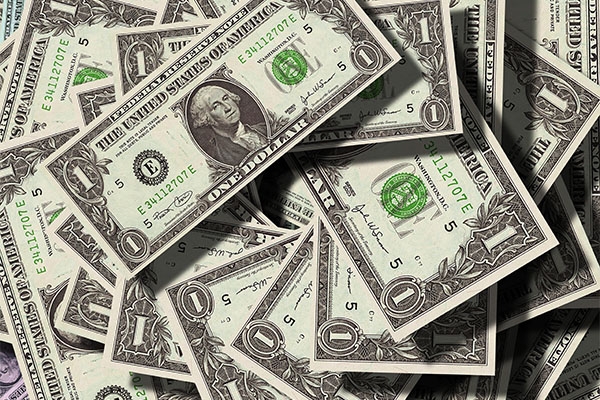Dare with me, brave reader, to stir up those manic and hopeful juices. Dare to spend a few moments thinking about The Millenium Dividend.
It is like the “Peace Dividend” that followed the end of the Vietnam War, only bigger. And it is like the “Cold War Dividend” that followed the fall of the Berlin Wall, only bigger. More important, it is a dividend you may find in your pocket.
The Millenium Dividend is the enormous boost in spending power American families would share when, and if, the inflation premium ever comes out of domestic interest rates. The only thing we have seen like it is the burst of consumer spending that followed the abrupt ( and temporary) decline of interest rates in 1992-93.
Compared to the Millenium Dividend, the recently passed tax cut is penny ante, just another bit of callow manipulation from Congress to boost the price of H & R Block stock and stimulate sales of Prozac to the tax law bewildered.
Why?
Because the Millenium Dividend wouldn’t cut the average consumers income tax bill, it would cut his interest payment bill, a much larger figure. We complain, quite rightly, about taxes but the bald truth is that millions of American families pay far more in interest than they pay in income taxes. One corollary: the biggest lever on our spending power is what we pay in interest, not what we pay in taxes.
Now look at interest rates and inflation. In the 50s, inflation averaged 2.2 percent a year. In the 60s it rose to 2.5 percent a year. During much of that period, home mortgage rates ranged from 5 to 6 percent. As inflation rose, so did interest rates on home mortgages, peaking at well over 10 percent in the early 80s.
While interest rates have declined with inflation, we are still paying a substantial premium for inflation angst. Right now, for instance, home mortgages typically cost nearly 7.5 percent even though inflation is running at 50’s and 60’s rates, just over 2 percent; even though new car prices will be flat to down; and even though a number of economists are talking about possible deflation.
The Rise… and Fall… of Inflation
| Period | Inflation Rate |
| 1940-49 | 5.4% |
| 1950-59 | 2.2 |
| 1960-69 | 2.5 |
| 1970-79 | 7.4 |
| 1980-89 | 5.1 |
| 1990-96 | 3.3 |
Source: Dimensional Funds Advisors
How big is The Millenium Dividend?
Let’s take a look at how it would work for a family buying a median priced home. According to the National Association of Realtors, the median existing home now sells for $123,700, up 3.9 percent from last year. To qualify to own that home with a 10 percent down payment and a 7.5 percent mortgage, you would need an annual income of $46,000.
In the first year of ownership, the family would have mortgage interest deductions of about $8,300. Add about $2,400 for real estate taxes and their itemized deductions would total $10,700. In addition, if the same family had two children they would have personal exemptions of $10,600. The combination would keep them in the 15 percent tax bracket and give them a federal income tax bill of about $3,700.
Now ask: What would happen if the Inflation Premium came off interest rates and home mortgage rates declined to 5.5 percent?
Interest expense would drop by about $2,200 a year while federal income taxes would rise by $330, providing a net increase in spending power of $1,870. ( Income taxes would rise because itemized deductions would be lower.)
Not everyone would enjoy such savings, of course. People who had owned their homes longer or who had smaller mortgages wouldn’t gain nearly as much. Renters probably wouldn’t gain at all.
Still, it’s an impressive opportunity. Note that we are not talking about fat cats with big mortgages on homes in Aspen and Malibu Beach. We are talking about a family in the lowest tax bracket with an income below the national median— the kind of family that probably hasn’t seen much boom but knows bust all too well.
Note also that this is one “cut” that helps the U.S. Treasury not once but twice: income tax collections rise while Treasury interest payments fall.
The Millenium Dividend For New Homeowners
| Item | At 7.5 percent | At 5.5 percent | Change |
| Early Interest | $8,300 | $6,100 | -$2,200 |
| Real Estate Taxes | 2,400 | 2,400 | unchanged |
| Exemptions (2) | 10,600 | 10,600 | unchanged |
| Total | 21,300 | 19,100 | -$2,200 |
| Taxable Income | 24,700 | 26,900 | +$2,200 |
| Federal Income Tax | 3,705 | 4,035 | +$ 330 |
| Interest + F.I.T. | 12,005 | 10,135 | -$1,870 |
Source: Author calculations
What does all this mean? Fiscal reform and budget balance is more important than tax handouts such as the recent tax goody grab bag.
This information is distributed for education purposes, and it is not to be construed as an offer, solicitation, recommendation, or endorsement of any particular security, product, or service.
Photo by Pixabay
(c) A.M. Universal, 1997
